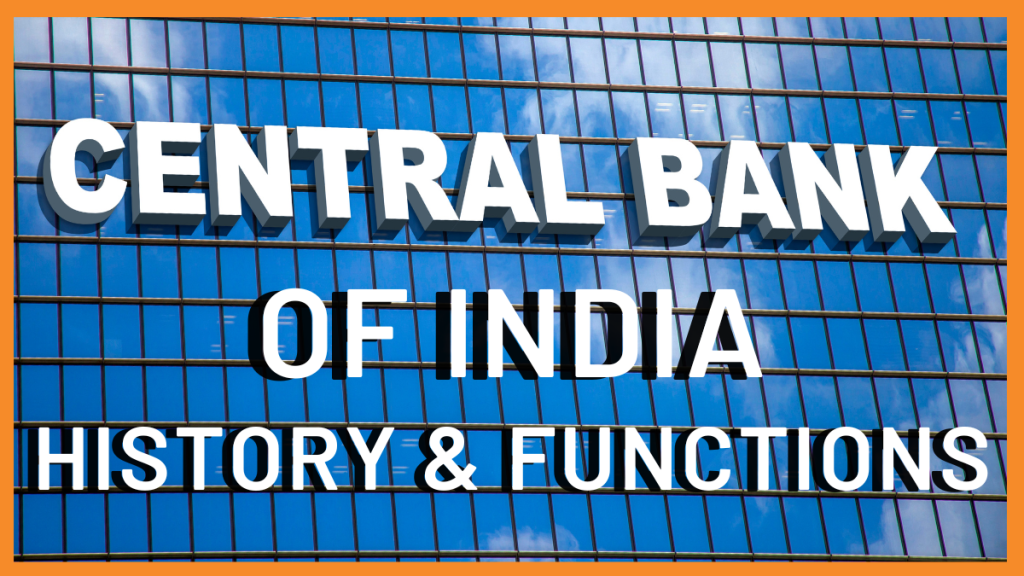Read all about the Reserve Bank of India (RBI), the history of the RBI, and its roles, objectives and functions of the RBI in this article written by an ex-RBI Grade B Officer, Mr. Chakshoo Mirakhur.

What is a Central Bank?
A lot of us aspire to work in the Central Bank of the country. We harbor hopes and dreams of making it to the “Apex Financial Institution”. We sacrifice our time, vitality and social lives to be part of this prestigious organization. But how many of us wonder – What is a Central Bank? Where did it come from? Was there a time before Central Banks? What makes modern Central Banks indispensable for the national economy? While the super-hero origin story of Central Banking is quite remarkable, in this short article I would like to provide a teleological definition of a Central Bank, which is just a fancy way of saying that I will describe the Central Bank in terms of its functions/ purpose.
The article is based on a BIS study, so you could use this information to enrich your answers and impress the interview panel 😉. There is no need to read the complete study.

Founding Dates of Central Banks
You might be surprised to know that central banks, prior to the 20th century, were established as profit-making entities. Peruse the chart below to get a sense of the establishment dates of these institutions over the centuries. Observe how most of the central banks were established during the 20th century. The Reserve Bank of India was established in 1935. Which other central banks were established during this period?
Objectives of Modern Central Banks
Over the years, as the global economy witnessed several devastating financial crises, central banks evolved as public policy agencies and progressively dropped their commercial objectives. Since then, the most important function of modern central banks around the world is by and large to promote monetary stability in the economy, which involves the conduct of monetary policy and the exchange rate policy. This would also naturally entail the management of liquidity in the banking system. Take a look at the chart below to appreciate the relative importance of this core function across a global sample of central banks:
Next in the order of priority for central banks is to maintain the stability of the sovereign financial system. From the above chart, you may note that the relative weight for this function is only 0.4, which means (roughly) that objectives related to financial stability do not feature as frequently in central bank laws as objectives related to monetary policy do. Financial stability is accomplished by formulating prudential policies that mediate the credit cycles (periods of credit expansion and credit contraction) in an economy. An extension of this function is the supervision and oversight of the entities participating in credit intermediation (Banks, NBFCs, etc.).
Further, it can also be deduced that the oversight and maintenance of the payment systems (especially inter-bank) and other financial infrastructure of a country is pivotal for overall financial stability since a breakdown of this critical infrastructure would incapacitate the ability of the banking system to move central bank reserves for payment settlement.
Some scholars also argue that the philosophical underpinning of the central banking system is guided by the lender-of-last-resort role that the central bank is expected to play, especially in periods of financial turmoil. This is what occurred with the Federal Reserve’s Quantitative Easing program during the 2008 Financial crisis. Maintenance of Foreign exchange reserves and intervention in the forex markets are other policy operation functions discharged by central banks.
In addition, due to their expertise in the financial domain, central banks have taken over public good functions too. This involves acting as debt and asset manager to the sovereign, taking on the mantle for economic development, consumer protection, and financial inclusion and providing research and statistics for general consumption.
RBI as a Full Service Central Bank
Take a look at the chart below. It clearly depicts the various functions that central banks across the world are entrusted with. Notice how the Reserve Bank of India (marked “IN”) has, to an extent, taken over almost all the functions attributed to a modern central bank. It is for this reason that RBI is called a Full-Service Central Bank. You can use these charts to compare and contrast the functions of various central banks across the world. Can you identify other Full-service central banks?
We hope you find this article useful and enjoyed reading it as much as we enjoyed writing it for you. We will be uploading many more such interesting articles on the RBI, its history, objectives and functions that will be both informative and educative. Keep watching this space for more!
Until then,
All best.
About the author

Mr. Chakshoo Mirakhur is an ex-Grabe B Officer who cleared the exam with an All-India rank of 7. He completed his MS from Northeastern University. He worked as an Associate Program Manager (Dell EMC) and as a Financial Data Analyst before joining the RBI in 2019. He is presently associated with ixamBee as an RBI Grade B course faculty member. Mr. Mirakhur now hopes to share his knowledge and experience with other aspirants and join them in their journey towards becoming future RBI Grade B Officers.
To help you prepare 50% faster for competitive exams, ixamBee provides free Mock Test Series all the Current Affairs in English and Current Affairs in Hindi in the BeePedia capsules for GA Preparation. You can also get the latest updates for Bank PO, Bank Clerk, SSC, RBI NABARD and Other Government Jobs.
Also Read
Perks of being an RBI Grade B Officer
List of Merged Public Sector Banks in India
A Complete Preparation Guide for RBI Grade B 2023
RBI Grade B 2023 Notification Out! 291 Vacancies, Eligibility & Exam Pattern














